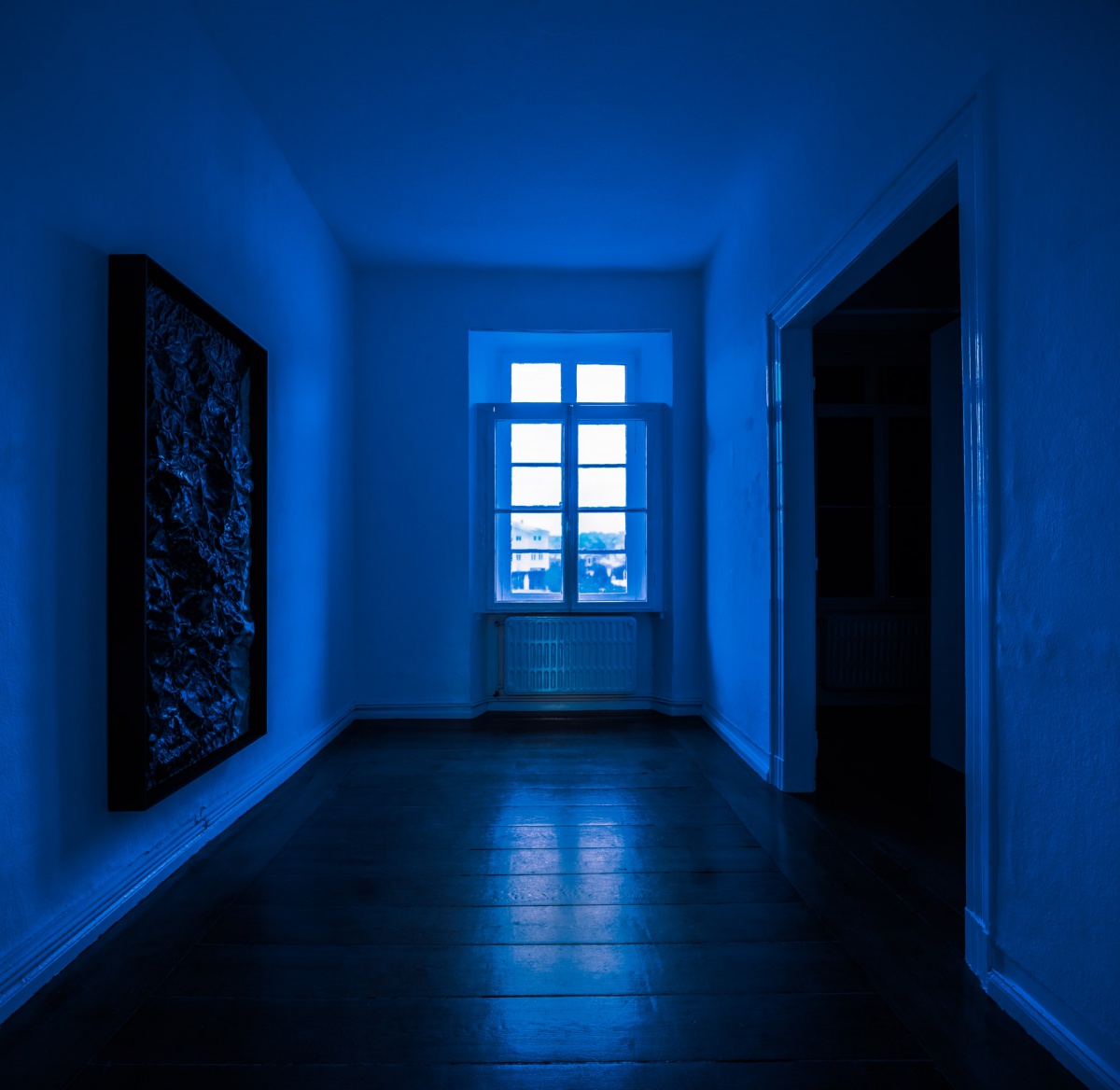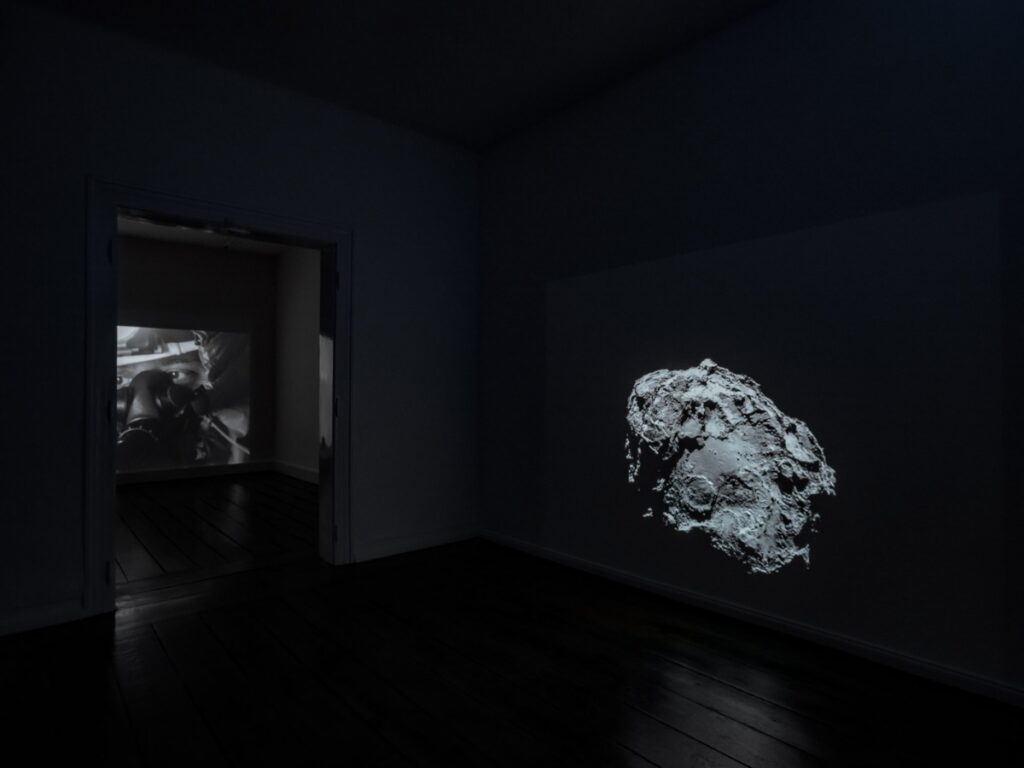Angelika Markul
IF THE HOURS WERE ALREADY COUNTED
18. September – 28. November 2021

With If The Hours Were Already Counted, Kunstverein Arnsberg presents the first institutional solo show by Angelika Markul (*1977, Szczecin) in Germany. The exhibition focuses on works that create narratives about the origins of life or past cultures and meanwhile bear witness to an imminently inevitable end.
Bathed in yellow, red, and blue light, Markul’s drawings, sculptures, and paintings from the series Tierra del Fuego(2018/2021) open the exhibition. Named after the South American archipelago of Tierra Del Fuego, the works address the disappearance of Patagonian glaciers and millennia-old cultures that once shaped and inhabited this land before being displaced by European settlers and climate change. The Selk'nam, Yaghan (Yámana) and Kawésqar peoples disappeared within a very short space of time during the last decades of the 19th century. Solely, the melting ice masses are visible today. The works in this series trace a speculative history of disappearance and demise, continuing a narrative that the artist introduced with her video work Memory of Glaciers (2017).
Memory of Glaciers traces the origin of all life on Earth. Footage of the comet 67P/Churyumov-Gerasimenko introduces the narrative. The black-and-white footage, which is more reminiscent of early science fiction special effects than the images' scientific background, was shot in the last decade as part of the Rosetta mission (2004-2016). Directly alongside the images taken in space, Markul places shots of Patagonia's glaciers, thus creating a short, poetic story of evolution. As the source of life, water becomes the central motif here from which both geological bodies – comet and glacier – are made. As protagonists, as wise and dark murmuring oracles, they provide insights into a past thousand or even billions of years ago. Both can bring life and death. And so, together with Côme Aguiar’s music, Memory of Glaciers can ultimately be understood as a visual and acoustic symphony of the forces of nature, of the cycle of becoming and passing away.
If The Hours Were Already Counted(2016) also takes a seemingly otherworldly place as its starting point: people in protective suits walk through a crystalline dreamscape. Again, the work is based on footage taken during a scientific expedition: In 2000, miners in the Mexican Naica mine discovered a cave about 300 metres underground with huge crystals up to eleven metres in size. The cave was made accessible to researchers to search for traces and primitive creatures that could provide information about the origin of life on Earth. The footage, published for the first time in Markul's work, is testament to the immediate experience of the sublime. Wonder and shock is written all over the scientists' faces, as is the physical exhaustion; with temperatures between 45°-50° C, and up to 100% humidity, conditions in the cave are threatening. Cooling overalls and cooling chambers are vital and make the explorers seem like pioneers on another planet.Markul has deliberately presented the footage in the style of early 19th century science fiction. Based on the famous etchings by Édouard Riou for Jules Verne's Journey to the Centre of the World (1864), the artist has also kept this work in black and white. In an interview, she describes her fascination with the blurred lines between fiction and reality that emerge here: “What amuses me is that what appears to be fantasy in one era becomes reality and commonplace in another, a delusional speculation.” (ARTMargins Online, 2017)
Markuls Arbeiten bewegen sich stets zwischen den scheinbar gegenläufigen Polen Wissenschaft und Fiktion: Als Science-Fictions verinnerlichen sie Erkenntnisse aus Ökologie, Geologie, Archäologie oder Astronomie – also aus Disziplinen, die sich auf die Erforschung von Vergangenheit und Zukunft konzentrieren. Immer wieder ergänzt die Künstlerin diesen Kontext um mystische und spirituelle Elemente. Ihre Arbeit kann schließlich als Hommage an die mitunter dunklen Geheimnisse dieser Erde verstanden werden. Angelika Markul lebt und arbeitet in Paris und Warschau. Ihre Arbeiten wurden weltweit in renommierten Ausstellungshäusern wie dem Palais de Tokyo (Paris), dem Musée CSW Zamek Ujazdowski (Warschau), dem Jewish Museum (New York) oder dem National Art Museum of China (Peking) ausgestellt.
With kind support from the Foundation for German-Polish Cooperation; the City of Arnsberg; the district of Hochsauerlandkreis; the Bureau des arts plastiques of the Institut français Germany and the French Ministry of Culture; Sparkasse Arnsberg-Sundern and Veltins. In cooperation with LETO Gallery, Warsaw, and the Polish Institute Düsseldorf.
Text & curation: Lydia Korndörfer




